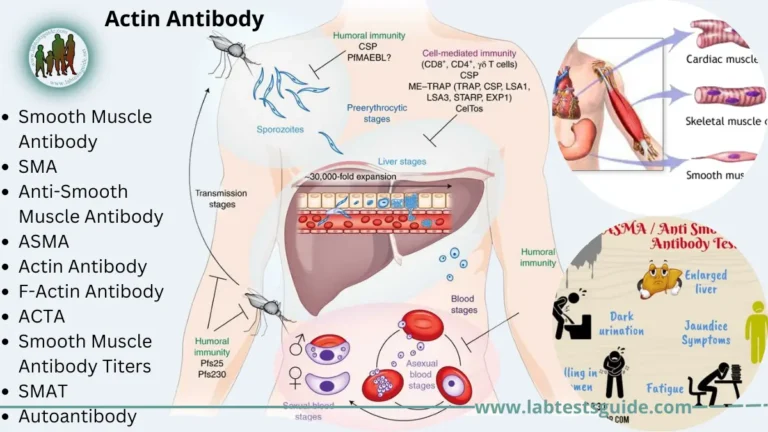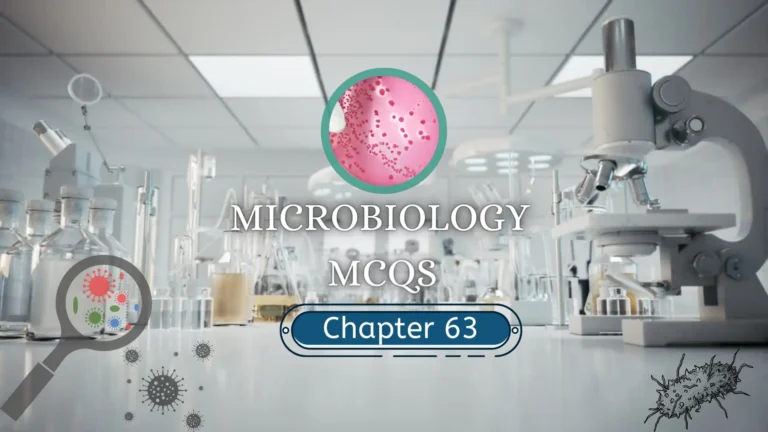5701 to 5750 MCQs for Lab Technician and Technologist Exam Preparation
5000 Plus MCQs for Lab Technician and Technologists are designed to test the knowledge and proficiency of laboratory professionals who work in the field of clinical laboratory science. These questions cover a wide range of topics related to laboratory science, including anatomy, physiology, microbiology, chemistry, and hematology.

If You like then share this to your friends and other social media.
If You have any question and suggestions then please Contact us Here
Questions 5701 to 5750
- Creatinine EDTA clearance is a test to measure
- Renal plasma flow
- Filtration fraction
- Glomerular filtration rate ✔
- Tubular function
- The normal PAH clearance for a surface area of 1.73 sqm. is
- 200 ml/min
- 300 ml/min
- 400 ml/min
- 574 ml/min✔
- Para amino hippurate is
- Filtered at glomeruli and secreted by the tubules ✔
- Filtered at glomeruli and not secreted by the tubules
- Filtered at glomeruli and reabsorbed completely
- Not removed completely during a single circulation of the blood through the kidney
- The Tm for PAH i.e the maximal secretory capacity of the tubule for PAH can be used to gavge the
- Extent of tubular damage ✔
- Impairment of the capacity of the tubule to perform osmotic work
- Impairment of renal plasma flow
- Glomerular filtration rate
- The normal Tm in mg/min/1.73 sqm for PAH is
- 20
- 40
- 60
- 80✔
- The normal range of filtration factor in an adult is
- 0.10–0.15
- 0.16–0.21 ✔
- 0.25–0.30
- 0.35–0.40
- The filtration factor tends to be normal in
- Early essential hypertension ✔
- Malignant phase of hypertension
- Glomerulonephritis
- Acute nephritis
- The filtration factor is increased in
- Glomerulonephritis
- Malignant phase of hypertension✔
- Early essential hypertension
- Acute nephritis
- The filtration factor is decreased in
- Glomerulonephritis ✔
- Early essential hypertension
- Malignant phase of hypertension
- Starvation
- Excretion of phenolsulphanpthalein (PSP) reflects
- Glomerulonephritis
- Maximaltabular excretory capacity
- Filtration factor
- Renal plasma flow ✔
- Which of the following is a polyunsaturated fatty acid?
- Palmitic acid
- Palmitoleic acid
- Linoleic acid ✔
- Oleic acid
- Which of the following is omega-3 polyunsaturated fatty acid?
- Linoleic acid
- α-Linolenic acid ✔
- γ-Linolenic acid
- Arachidonic acid
- Triglycerides are
- Heavier than water
- Major constituents of membranes
- Non-polar ✔
- Hydrophilic
- Cerebronic acid is present in
- Glycerophospholipids
- Sphingo phospho lipids
- Galactosyl ceramide✔
- Gangliosides
- Acylsphingosine is also known as
- Sphingomyelin
- Ceramide ✔
- Cerebroside
- Sulphatide
- The highest phospholipids content is found in
- Chylomicrons
- VLDL
- LDL
- HDL ✔
- The major lipid in chylomicrons is
- Triglycerides ✔
- Phospholipids
- Cholesterol
- Free fatty acids
- Number of carbon atoms in cholesterol is
- 17
- 19
- 27 ✔
- 30
- The lipoprotein richest in cholesterol is
- Chylomicrons
- VLDL
- LDL ✔
- HDL
- The major storage form of lipids is
- Esterified cholesterol
- Glycerophospholipids
- Triglycerides ✔
- Sphingolipids
- Cerebonic acid is present in
- Triglycerides
- Cerebrosides ✔
- Esterified cholestrol
- Sphingomyelin
- The nitrogenous base in lecithin is
- Ethanolamine
- Choline ✔
- Serine
- Betaine
- All the following are omega-6-fatty acids except
- Linoleic acid
- α-Linolenic acid ✔
- γ-Linolenic acid
- Arachidonic acid
- All the following have 18 carbon atoms except
- Linoleic acid
- Linolenic acid
- Arachidonic acid ✔
- Stearic acid
- A 20-carbon fatty acid among the following is
- Linoleic acid
- α -Linolenic acid
- β -Linolenic acid
- Arachidonic acid ✔
- Triglycerides are transported from liver to extrahepatic tissues by
- Chylomicrons
- VLDL ✔
- HDL
- LDL
- Cholesterol is transported from liver to extrahepatic tissues by
- Chylomicrons
- VLDL
- HDL
- LDL ✔
- Elevated plasma level of the following projects against atherosclerosis:
- Chylomicrons
- VLDL
- HDL ✔
- LDL
- All the following amino acids are nonessential except
- Alanine
- Histidine ✔
- Cysteine
- Proline
- Sulphydryl group is present in
- Cysteine ✔
- Methionine
- Both (Cysteine) and (Methionine)
- None of these
- Oligosaccharide-pyrophosphoryl dolichol is required for the synthesis of
- N-linked glycoproteins ✔
- O-linked glycoproteins
- GPI-linked glycoproteins
- All of these
- In N-linked glycoproteins, oligosaccharide is attached to protein through its
- Asparagine residue ✔
- Glutamine residue
- Arginine residue
- Lysine residue
- De hovo synthesis of fatty acids occurs in
- Cytosol ✔
- Mitochondria
- Microsomes
- All of these
- Acyl Carrier Protein contains the vitamin:
- Biotin
- Lipoic acid
- Pantothenic acid ✔
- Folic acid
- Which of the following is required as a reductant in fatty acid synthesis?
- NADH
- NADPH ✔
- FADH2
- FMNH2
- Hepatic liponenesis is stimulated by:
- cAMP
- Glucagon
- Epinephrine
- Insulin✔
- De novo synthesis of fatty acids requires all of the following except
- Biotin
- NADH ✔
- Panthothenic acid
- ATP
- Acetyl CoA carboxylase regulates fatty acid synthesis by which of the following mechanism?
- Allosteric regulation
- Covalent modification
- Induction and repression
- All of these ✔
- β-Oxidation of fatty acids requires all the following coenzymes except
- CoA
- FAD
- NAD
- NADP ✔
- Which of the following can be oxidized by β-oxidation pathway?
- Saturated fatty acids
- Monosaturated fatty acids
- Polyunsaturated fatty acids
- All of these ✔
- Propionyl CoA is formed on oxidation of
- Monounsaturated fatty acids
- Polyunsaturated fatty acids
- Fatty acids with odd number of carbon atoms ✔
- None of these
- An enzyme required for the synthesis of ketone bodies as well as cholesterol is
- Acetyl CoA carboxylase
- HMG CoA synthetase ✔
- HMG CoA reductase
- HMG CoA lyase
- Ketone bodies are synthesized in
- Adipose tissue
- Liver ✔
- Muscles
- Brain
- All the following statements about ketone bodies are true except
- Their synthesis increases in diabetes mellitus
- They are synthesized in mitchondria
- They can deplete the alkali reserve
- They can be oxidized in the liver✔
- All the following statements about carnitine are true except
- It can be synthesised in the human body
- It can be synthesized from methionine and lysine
- It is required for transport of short chain fatty acids into mitochondria ✔
- Its deficiency can occur due to haemodialysis
- Which of the following can be synthesized in the human body if precurors are available?
- Oleic acid
- Palmitoleic acid
- Arachidonic acid
- All of these ✔
- All the following can be oxidized by βoxidation except
- Palmitic acid
- Phytanic acid ✔
- Linoleic acid
- Fatty acids having an odd number of carbon atoms
- Anti-inflammatory corticosteroids inhibit the synthesis of
- Leukotrienes
- Prostaglandins
- Thromboxanes
- All of these ✔
- Diets having a high ratio of polyunsaturated: saturated fatty acids can cause
- Increase in serum triglycerides
- Decrease in serum cholesterol ✔
- Decrease in serum HDL
- Skin lesions
- Thromboxanes cause
- Vasodilation
- Bronchoconstriction
- Platelet aggregation ✔
- All of these
The questions are typically designed to assess the technical skills and knowledge required for the laboratory profession, including the ability to analyze laboratory test results, perform laboratory procedures, and maintain laboratory equipment.
To prepare for these MCQs, candidates should have a thorough understanding of the key concepts and principles of laboratory science. They should also be familiar with common laboratory equipment and procedures, as well as laboratory safety protocols.
Candidates may also benefit from studying specific laboratory science textbooks or taking online courses that cover the material tested in the MCQs. Additionally, practicing sample MCQs and reviewing the answers can help candidates identify areas where they may need to improve their knowledge or skills.
Overall, the MCQs for lab technologists are designed to be challenging and comprehensive, requiring candidates to demonstrate a high level of proficiency in the field of laboratory science.
Possible References Used





